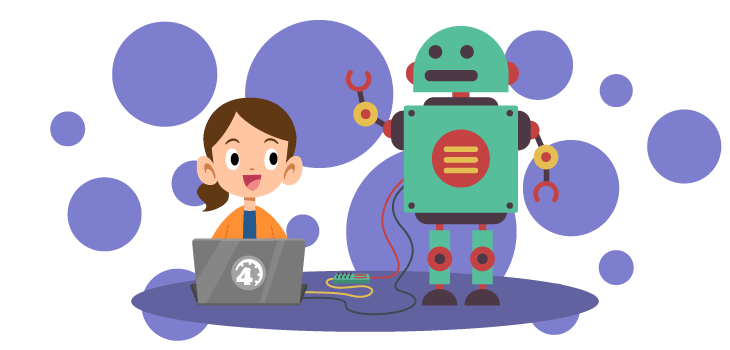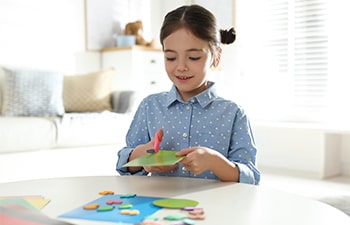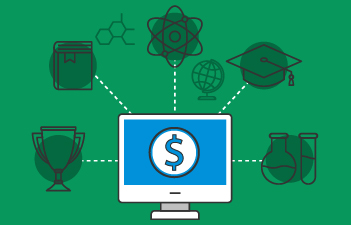Of all the things we as parents did in our own schooling, projects often stand out in our memories. Why? We often spent more time and extra effort on them, and we enjoyed being creative. Projects often moved beyond the typical reading, writing, and arithmetic work we typically did in school, and we finished our projects with a definitive sense of pride. Today, project-based learning—a type of learning where meaning is created within a student-led, real-world context—has evolved to focus on the process and is becoming increasingly popular as a way of engaging students while helping them learn 21st century skills.
The project-based learning methodology (or pbl method of teaching) is a way to structure curriculum around projects that promote inquiry-based activities. Students can learn content while sharing ideas and evaluating their own ideas. Project-based learning benefits include the development of skills like idea generation, collection of resources, time-management, design, organization, collaboration, revision, and publication/presentation.
The project-based learning method is ideal for homeschooling because of its individualized nature. Let’s see how the three types of project-based learning might work in your homeschool:
Challenge-Based Learning/Problem-Based Learning
Challenge-based learning is a rebranded version of the popular problem-based teaching method that excited educational circles with its emphasis on student-led solving of real-world problems. In this method, students are encouraged to use technology and develop solutions to problems in their homes and communities. They build skills in problem solving, research, and potentially social skills while being engaged in learning. Challenges, or problems, to target can be found in a variety of sources, including newspapers, books, movies, case studies, and magazines.
In your homeschool, problem-based learning activities can be the focus of your instruction, or they can simply be the start of a discussion… and everything in between. For example, you might ask your children to consider how to protect a local species of plant or animal, how to increase good nutrition in the household, or how to reduce the spread of a virus in the community. They may have to pull from information across science, math, ELA, and social studies in order to design solutions, and then they can present final products (i.e., PowerPoints, letters, graphs) to the family or even members of the community.
Place-Based Education
Place-based education uses the local community—including its culture and heritage, landscapes, and opportunities and experiences—to study across a range of subjects. It may include service projects for an organization and/or community, but it may not involve “projects” in the traditional sense at all. Through place-based education, students benefit from inquiry-based, relevant learning that is personalized and grounded in local communities.
Place-based education focuses on the setting rather than the solution of a distinct problem as in challenge-based learning, but both learning methods can, and often do, extend across ELA, math, science, social studies, and other subject areas. Like challenge-based learning, students are driven by their own motivations and interests, following Piaget’s constructivist (learners creating their own meaning) approach to education. Place-based education has many names, including experiential learning, community-based education, environmental/sustainability education, and even service learning.
In your homeschool, you may want to target your local community where you can address local issues like poor housing or economics or community involvement, or you can focus on a local area like a state or national park and learn about its geography, history, or wildlife. In the event you are “roadschooling,” you can use the current geographic location you are in to drive the learning (pun intended!). “Worldschooling” families can have an even broader cultural experience. Those who cannot travel to locations of interest can visit virtually and experience place-based education remotely or design virtual reality models of places they research.
Activity-Based Learning
Activity-based learning emphasizes the constructivist approach through hands-on activities. Students “construct” meaning through manipulatives and experiments. Activity-based learning may be very useful in homeschools where there are children learning at different levels. Like problem-based learning and place-based learning, it is a child-centered approach.
In some versions of activity-based learning, like those popularized in India, activity cards are created, and each child chooses from the cards containing a variety of activities (i.e., games, artwork, music) to encourage understanding of a concept. Once a group of cards is completed, a milestone is reached, and the child can choose an assessment card.
In your homeschool, you may want to try the use of activity cards, or you may simply want to list a variety of activities related to a particular concept. For example, you may want to include reading, writing, drawing, building, experimenting, and music activities when learning about the water cycle. If you have more than one child in your homeschool, you can differentiate the activities to their reading and writing levels, as well as their interests and preferences, while they all learn about a similar topic.
Regardless of which type of project-based learning you use, your child will benefit simply from the fact that you are trying something new. Consider experimenting with each of the types and incorporating even brief learning sessions in each of the styles at first. Have fun with the pbl teaching method and see how your children react!
FAQ’s About the Different Types of Project Based Learning
What are the benefits of the different types of project-based learning?
Project-based learning often combines independent and interdependent learning that is reflective of the real-world. Students can be more motivated by the problems, settings, and activities in which they are immersed, therefore increasing the likelihood that real learning is taking place. Project-based learning is generally student-led and individualized, which allows for differentiation and the maximizing of student potential.
What are the potential issues related to the different types of project-based learning?
If you are involving collaboration of siblings or members of a homeschool group, sometimes there are issues within the group. Namely, some students find they are doing the bulk of the work. This can be helped by giving only individual grades rather than group grades, by separating roles and responsibilities (perhaps with checklists) and providing guidelines and instruction on how to effectively lead and collaborate. Students working alone may lack enthusiasm, particularly if a project seems like “just another project.” Fix this by providing an audience for the project (and deliver a final product to that audience if possible). The transition to such active learning may also be difficult. Help students transition by providing assessment criteria but allowing students to choose the format. You can also support students to take leadership roles in related activities and set rules and expectations for the activities.
What are the steps in problem-based learning?
Depending on where you look, there are between six and nine steps to problem-based learning. In general, the process begins with the identification of a problem. Students then define the problem and brainstorm ideas (including goals, materials needed, and deadlines). This is followed by independent study, the sharing of information/discussion, and work toward a solution. Once a solution has been developed, students present their solution, review their learning, and self-assess.
Why is problem-based learning important?
Problem-based learning closely approximates what happens in real-life job situations. It builds important skills like problem solving and promotes cognitive flexibility in determining solutions (i.e., if one idea doesn’t work, try another). Students learn to appreciate the context of problems as well as the audience when presenting solutions.
Why is place-based education important?
Place-based education is important because it provides a context for learning. It strengthens understanding of the concept of community while also increasing engagement and academics. Place-based projects can also impact the communities in which they are based or at least broaden understanding of the social, environmental, and economic conditions of the world for the students involved.
Why is activity-based learning important?
Activity-based learning is especially important in the early grades because activities motivate young students to engage in learning. As a result, they are better able to understand new knowledge and master skills. Activity-based learning also provides flexibility for those homeschools that include children performing at different academic levels.








The text enhanced my pedagogy knowledge shifting from theory based learning to practical/project based learning…..how I wish I can study it and teach students about it.
Thanks for stopping by! Keep seeking and sharing your knowledge with others!
Saves time during learning
Does PBL project have to collaborative?
Hi Markis! Not at all. While collaboration is always possible, PBL works very well with independent learners too. 🙂